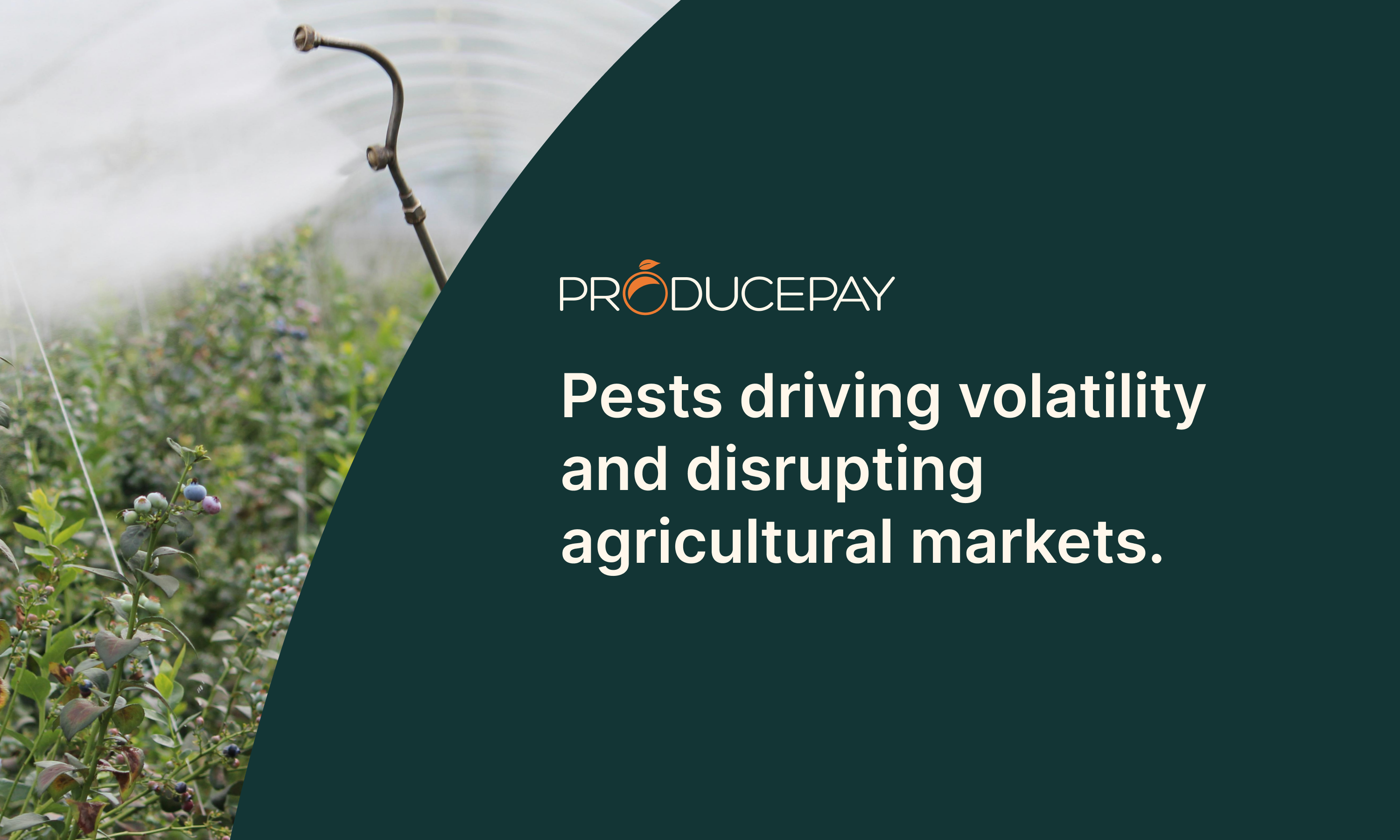
Pests driving volatility and disrupting agricultural markets
The agricultural industry has long faced the challenges of pests, which can destabilize the entire supply chain, impacting everything from local growers to global retailers, contributing to market volatility, pushing up prices and creating supply shortages. As the effects continue to threaten the industry, the need for strategic management approaches and adequate phytosanitary regulations that reduce their impact becomes increasingly critical.
Pests creating agricultural volatility
Pests introduce volatility by endangering crop health, lowering yields, and impacting prices. When outbreaks occur, trade restrictions are often imposed to prevent further spread, which often leads to supply shortages and immediate price increases.
For example, the Mediterranean fruit fly, recently detected in California’s Alameda and Santa Clara counties, has significantly impacted local markets due to its persistent spread.
In Argentina, the surge of leafhoppers significantly reduced corn production, with warmer temperatures contributing to the spread. As a result, production dropped by an estimated 10 million tons for the current season, posing a significant economic threat to local farmers and pushing them to reevaluate their crop choices.
Similarly, across multiple U.S. states, tar spot disease in corn has created a major setback for growers. This fast-spreading disease can cause severe yield losses, which not only impact immediate harvests but also add layers of complexity for farmers who must plan for the future under the threat of recurring outbreaks.
The role of phytosanitary standards
Phytosanitary standards are crucial in preventing the spread of pests across regions and countries, protecting both local agriculture and global trade. When produce is transported, it must meet strict regulations to ensure it is free from harmful pests and pathogens, helping prevent widespread crop losses and market instability.
Shipments that fail to meet phytosanitary requirements may face delays or even be denied entry, causing financial losses for growers and buyers. This is particularly relevant in high-value crops like fruits and vegetables, where any sign of infestation could trigger strict regulatory measures.
Institutions such as the U.S. Department of Agriculture (USDA) are responsible for creating and enforcing these standards to ensure food safety and protect domestic agriculture. For instance, the USDA’s Animal and Plant Health Inspection Service (APHIS), for instance, plays a critical role in controlling pest introductions and outbreaks through measures like quarantines and inspections. In response to the Mediterranean fruit fly detected in California, APHIS swiftly expanded quarantine areas to limit the pest’s spread, protecting local produce and preventing potential economic losses.
Recommendations for minimizing pest-induced volatility
Reducing the impact of pests in the produce industry requires a combination of proactive management and strict adherence to phytosanitary standards.
1. Implement integrated pest management (IPM): IPM uses preventive, biological, and mechanical methods to control pests while reducing chemical use. Practices like crop rotation and field monitoring can help prevent large outbreaks.
2. Ensure phytosanitary compliance: Following phytosanitary standards is essential for preventing the spread of pests across borders. Compliance with inspection and treatment requirements helps avoid shipment delays and quarantine restrictions.
3. Enhance education and training: Training programs can help growers understand IPM practices, monitoring techniques, and phytosanitary requirements, empowering them to manage pest risks more effectively.
4. Foster collaboration: Regional and international networks facilitate the sharing of information, effective treatments, and compliance measures, enabling faster, coordinated responses to pest threats.
The constant threat of pest outbreaks has created a challenging landscape for the produce industry, affecting everyone from local growers to global retailers. By destabilizing the supply chain, pests increase market volatility, pushing prices higher and disrupting reliable product availability. As such, comprehensive pest management and adherence to strict phytosanitary standards are essential for reducing these impacts.
To support growers in managing this volatility, ProducePay created Predictable Commerce Programs that prioritize stability and predictability in the agricultural supply chain. These programs redistribute risk across the entire supply chain, so growers do not have to bear with the entire weather, crop and financial risks. This ensures a reliable income for them and allows them to plan for the long-term with predictable pricing and secure market access. This collaborative solution strengthens the entire supply chain, ensuring supply of high-quality produce year-round, regardless of market disruptions.
Sources: Fresh Fruit Portal, Reuters, Crop Life

